Everything in our everyday life needs electricity, so have you ever given it a thought as to how it’s being generated? The crux lies in the distinction between the two types of generators, namely, AC and DC types. If we are to appreciate what enables houses to glow, businesses to operate, and technology to work, then understanding how these generators operate is imperative. This particular article endeavors to highlight the major differences between AC and DC generators, laying special emphasis on the captivating realm of 3-phase generators. We shall discover their functionality, superiority, and applications, thereby providing some clarity on these paramount components of energy. An engineer, a student, or somebody simply curious; the mechanical information given in this article will surely be of assistance to you in grasping at least a part of the energy we cherish today. So, off we go!
Overview of Generators
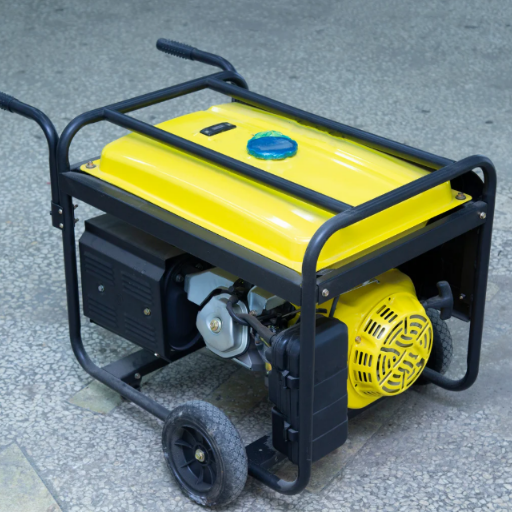
A generator is usually any machine that converts mechanical energy into electrical energy by following the classic electromagnetic induction principle. Now the primary parts of the generator are the rotor (the moving part), the stator (the stationary part), and the source of mechanical energy, such as a turbine or an engine. Two major types of generators are AC and DC generators. An AC generator will produce electricity that periodically reverses its direction and is mainly used in power plants, while a DC generator will provide a steady flow of electricity and is usually employed for relatively small applications. Both are extremely important in assisting modern energy requirements in various industries.
What is a Generator?
A generator works on the principle of electromagnetic induction, which was first discovered by Michael Faraday. As a copper wire moves through a magnetic field, an electric current is produced in it. This takes place as a result of the interaction of several generator parts, primarily the rotor (moving part) and the stator (stationary part).
A more detailed explanation can be given by splitting one into components and describing their relations in power generation:
- Rotor and Stator Interaction: The rotor is flung inside the stator’s magnetic field by a mechanical source of energy, such as a turbine. This motion makes free electrons flow, creating electrical energy.
- Voltage Regulation: Today’s generators have a regulator that keeps voltage steady in output while maintaining a stable power supply or adaptive protection for measuring devices.
- Power Output: Generators are defined by their capacities of output, usually expressed in kilowatts (kW) or megawatts (MW). Smaller generators for homes usually have outputs in the 5 to 10-kW range, which is enough for basic appliances. Industrial generators can have outputs in excess of 2,000 kilowatts to meet heavy energy consumption.
- Efficiency Improvements: In recent years, technology has made generators much more efficient, with industrially used units reaching over 90% efficiency in some cases energy dissipation losses are minimized.
Generators are still evolving, with innovations such as renewable energy integration crucial to emission reduction and sustainability. Today, generators are the centerpieces in providing power to homes, commercial establishments, and big construction projects, especially in patches of land with precarious relief from centralized energy grids.
Types of Generators: AC and DC
Generators can be broadly classified into two types depending on the type of current they produce: the AC (Alternating Current) generators and the C (Direct Current) generators.
AC Generators: Used alternators produce an alternating current that changes directions periodically. They were predominantly utilized at power stations and industrial establishments for supplying electricity to homes and commercial outlets. Modern AC generators could get very high efficiencies, so many large-scale systems are employed for the generation of electrical power at frequencies that are usual for the infrastructure, i.e., 50Hz or 60Hz, depending on the part of the world. The chief thing in favor of the AC generator is that very long-distance transmission systems can be powered with hardly any loss of energy. For example, with the transformers stepping voltages up or down as per requirement in distribution, AC generators form the backbone of any modern electricity grid.
DC Generators: DC generators produce a direct current, as it always flows in one direction. Due to this set of specifications, the generators are often used in applications that require stable voltage and low power output, such as electric vehicles, battery charging devices, or on a smaller scale, renewable power generation such as solar panels. DC generators use commutators to convert internally generated alternating current into direct current. While not very common in large-scale power generation due to their reduced usefulness for long-distance transmission, DC generators are best suited for localized applications requiring stability and reliability. They can generate an output voltage from very low to high, depending on the design and application, used from small electronics to larger industrial machines.
Both types of generators have had their importance in different industries and keep evolving through the advances in energy technology to sustain efficiency and adaptability for modern energy applications.
Applications of Generators in Industry
Generators find application in almost all industries, emphasizing their versatility and necessity in powering a number of operations. Here is an extensive list of applications:
- Manufacturing Industry
-
- To keep a business going through power outages.
- To operate heavy tools such as lathes, welding equipment, and conveyor systems.
- To give support to automated systems, thus cutting down on downtime and enhancing productivity.
- Healthcare Sector
-
- Maintaining an uninterruptible power supply to the ventilators, MRI machines, and surgical instruments.
- Power provision in emergencies to mitigate interruptions in patient care.
- Used in remote medical camps or mobile clinics.
- Construction Industry
-
- Human Tools and equipment on construction sites when there is no access to the grid.
- Operation of machinery such as cranes, drilling machines, and concrete mixers.
- Mobility as portable generators is commonly used in construction operations.
- Agriculture
-
- It supplies electricity for irrigation systems, grain dryers, and milking machines.
- It powers barns, greenhouses, and storage facilities to maintain required conditions.
- It is used in remote farms that are not directly connected to the grids.
- Commercial Buildings
-
- Acts as backup contingent power in offices, shops, and plazas.
- Supports critical loads such as elevators, lighting, and HVAC systems during power failures.
- Power stability is offered to data centers and IT infrastructures, thus preventing data loss.
- Telecommunications
-
- To make sure that cell towers and communication networks are literally operational
- Power supply for secondary power, while in use for the functioning of cell towers
- Power sources that back up most data power stations on a network.
- Mining Operations
-
- It powers large mining equipment such as drills, hoists, and ventilation systems.
- Reliable operations are provided in remote locations where grid power is not available.
- Supports lighting and safety below the surface.
- Event Management
-
- This type of power is interrupted for concerts, festivals, and outdoor programs.
- It operates sound systems, lights, and cooking instruments for huge gatherings.
- Generators are used to enhance the portability factor.
One could say modern civilization cannot operate without generators, enabling industries to respond to power requirements at different levels according to operational conditions and location.
Single-Phase vs. Three-Phase Generators
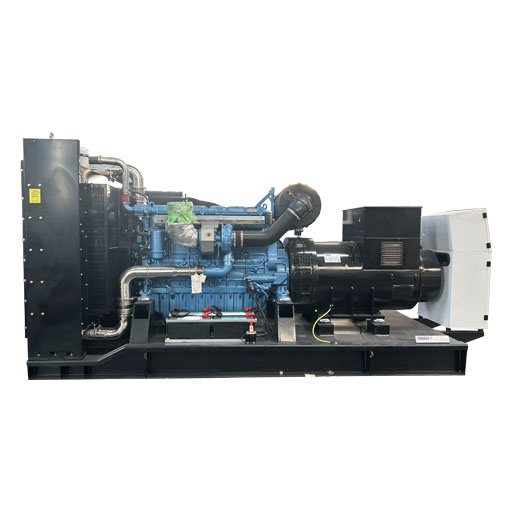
Given their working principle, single-phase generators are able to inject energy through a single alternating current. It shall be the low-power option that is considered the smallest extreme: residential, small business, or portable devices. Weiss draws up for half the effort and half the weight and is cheap, but it cannot take the higher loads.
Three-phase generators, formally, are forces supplied in three alternating currents, offering a stable and efficient supply of energy. They are mostly used where bigger power capacities and steady energy distributions are needed than industrial and commercial types. In simpler terms, these generators are the chosen ones for heavy industrial machines and large technically oriented equipment.
Some more considerations between the two sets would be output capacity and specific usage. If it has a little output capacity, go for a single phase; if harder environment, go for three.
Definition of Single-Phase Generators
Single-phase generators refer to those electric power generators generating electrical energy with a single cycle of alternate current (AC) voltage. They supply electricity via one waveform and hence are more suited to smaller applications. Single-phase generators are considered ideal for use in residential homes and in small businesses, or for convenient portable applications requiring either 120 volts or 240 volts. Because of their simplicity of design, minimal maintenance, and lower cost, these generators have always been preferred for basic power requirements.
Single-phase generators work by creating uninterrupted electricity through a simple circuit design, thus making them compatible with any household appliances and light-duty equipment. However, in transporting power over longer distances, they are less efficient than three-phase generators. This set of generators is best applied in scenarios where low but steady power is required, such as lighting, heating, and powering inexpensive electrical tools.
Understanding Three-Phase Generators
Single-phase generators are electrical devices designed to supply power through a single sinusoidal AC waveform. These generators share uniform voltage cycles and are used in situations of low power demand. That is, they predominantly operate at low voltages, usually between 120V and 240V, making them suitable mostly for home use and somewhat small commercial activities.
In contrast to the three-phase generators that supply power on three different phases, single-phase generators supply power on one single-phase, thus limiting power output but facilitating operation and framework. Energy needs of household appliances in a home are an excellent example for these generators; likewise, small workshops and tools that do not require a constant high power supply. Soyngle-phase generators can offer more portability and versatility, many of which are compact and lightweight.
Motor-generators improved energy efficiency and reliability to a modern design, including inverter technology to generate clean and stable energy usable for electronics. According to recent figures, the normal wattage output of these generators is somewhere between 1 kW and 10 kW, making a perfect compromise between general usability and cost-effectiveness.
Advantages of Three-Phase Power Systems
- Higher Efficiency
Three-phase power systems have higher efficiency than single-phase power systems in transmitting power; they provide a wholesome and well-balanced energy supply, thereby reducing energy losses.
- Cost-Effectiveness in Power Transmission
Due to their ability to use smaller conductor sizes and operate at a lower voltage, three-phase power systems greatly reduce the costs of power distribution infrastructure.
- Greater Power Density
The three-phase system can provide more power while maintaining the same conductor sizing, hence it is used for heavy industrial machinery and high-demand applications.
- Smooth and Stable Operation
These allow smoother operation of the equipment, with less vibration and noise, which is quite important for motors and other rotating machines, in turn, increasing their lifespan.
- Better for Industrial Applications
Three-phase systems efficiently handle large power loads demanded in various industrial and commercial applications. They run multiple heavy machines simultaneously without overloading.
- Lower Maintenance Requirements
This balanced power delivery results in less wear and tear on equipment, significantly decreasing maintenance costs.
Tall these points make one wonder if indeed the three-phase system wins the race when it comes to industrial, commercial and even certain residential applications demanding high reliability and efficiency.
How AC Generators Work
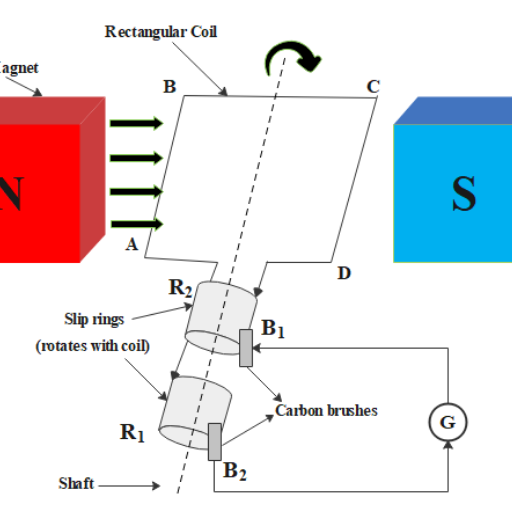
Electricity is produced by transmission from mechanical energy using electromagnetic induction. Whenever a coil rotates inside a magnetic field, it forces electric currents to flow through it. The rotations of the coil can be caused by different power sources: steam turbines, water turbines, internal combustion engines, etc. The most important parts of an AC generator are a rotor and stator, the former being the moving member creating the magnetic field and the latter being the stationary member in which electromotive force is induced. The current thus produced is alternating current, which periodically reverses its direction.
Principles of AC Generation
Electricity is generated by the motion induced in a current-carrying conductor in a magnetic field phenomenon which Michael Faraday termed electromagnetic induction. Consider that when the conductor, say, a coil of wire, moves through a magnetic field, an electric current is induced in it. One of the major mathematical relationships governing that phenomenon is Faraday’s Law of Electromagnetic Induction, which states that the induced EMF in any closed circuit is equal to the rate of change of magnetic flux through the circuit.
Modern AC generators are very efficient; it is industrial generators that produce large quantities of electricity. For instance, large-scale power plants use steam turbines coupled to AC generators for electricity production, with those generators usually rated for hundreds of megawatts. Just one of such generator, installed at a power plant, produces enough energy for the needs of tens of thousands of houses.
Further advancements in materials and engineering have also increased the efficiency of AC generation. For instance, in some experimental generators, superconducting materials have been employed to minimize resistance drastically to improve efficiency. AC generation has further advantages in terms of power distribution in that it allows voltages to be easily stepped up and down with transformers, allowing efficient transmission of power across vast distances with very little loss.
The Role of the Magnetic Field
The presence of magnetic fields is a prerequisite for producing alternating current. When a conductor, i.e., a coil of wire, is moved through a magnetic field, an electric current gets induced as per electromagnetic induction: a phenomenon first enunciated by Faraday’s induction law. The amount of current generated is directly proportional to the strength of the magnetic field, the number of turns in the coil, and the speed at which the coil is moving through the magnetic field.
Modern-day technologies are, however, taking great care to leverage the magnetic field design for further improved efficiency. Thus, present-day AC generators incorporate rare-earth magnets like neodymium magnets capable of generating stronger magnetic fields in a very compact package. This improvement enables higher energy output without increasing the size of the generator.
Research from the cutting edge tells us that if magnetic flux density (measured in Tesla) is increased, power output is increased by a similar factor. For instance, industrial applications often employ generators where the magnetic flux density values can go up to 2.0 Tesla. This is to presently meet spikes in demand, which is very high compared to traditional systems. These embodiments illustrate how crucial the magnetic field is in enhancing the performance as well as the scale-up opportunities for the AC generation system.
Generating AC Voltage in Three-Phase Systems
In the present day, the majority of electrical power generation occurs through these three-phase systems, with an emphasis put on efficiency and reliability. As the name suggests, in these systems, three alternating currents are generated with a 120-degree phase angle difference between one another. It ensures a steady power supply to the alternators, reducing any vibrations in the line and providing smoother operation of electrical equipment.
This voltage generation occurs because of the rotation of magnetic fields within the generator; for instance, a three-phase generator with a magnetic flux density of 1.5 Tesla and 3000 RPM speed rotates to give such a voltage output suitable for industrial grids. Commonly, the line-to-line voltage or line voltage of the system can be 400V or above, depending on the applications.
With the advent of new materials like high-performance superconductors, the three-phase generators have enjoyed a new lease of life. By minimizing resistive losses and maximizing the magnetic efficiencies, these materials are now facilitating power generation on gigantic scales with a pittance in terms of energy wastage. Research is pointing towards the fact that the new conductor technology could lead to at least a 15% increase in the efficiency levels of a generator, thus making them more sustainable for future energy needs.
Moreover, three-phase systems are required for grid stability. Unlike single-phase systems, they maintain a better balance between the power loads, providing less fluctuation in energy. Also, industries lean towards three-phase arrangements as they offer the capacity needed by high-power machinery with comparatively lower current ratings, leading to energy loss through transmission lines.
The Functionality of DC Generators
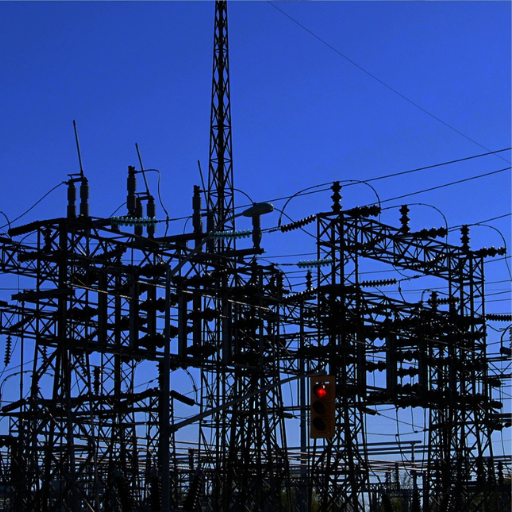
DC generators work by mechanical energy being converted into direct current electricity by the electromagnetic induction principle. Within the generator, the conductor moves in the magnetic field and induces an electron flow. The main components of the generators are the armature, where the conversion of mechanical to electrical occurs, and the commutator, where the current is ensured to flow in one solid direction. Since such operations are running, DC generators are used in those applications where stable and reliable power output is highly required.
How DC Generators Operate
A DC generator operates with precision in the process of electromagnetic induction to convert mechanical energy into electrical energy. It starts with the armature winding, whose motion is provided by some prime mover from outside, such as an engine or turbine. This conductor, moving in a magnetic field, cuts the lines of magnetic flux and an electromotive force is generated. The magnitude of the EMF generated can be held to depend on the rate of change of the magnetic flux as per Faraday’s Law.
In the case of generators, one needs to avail an output that is steady and unidirectional. Hence, one special piece of equipment that ensures this is the commutator. The commutator, along with brushes made of carbon or graphite, converts the alternating current induced in the armature windings into direct current for the output. Modern studies attest that using an optimized armature and commutator design will enhance efficiency. Typical small DC generators work from 6 V to 28 V, while the industrial ones may generate up to hundreds of kilowatts.
DC generators find great significance in constant voltage applications like battery charging, welding, and various transportation applications such as railway networks. Renewable energy systems, as highlighted by contemporary research, have their prominent utilization of these generators as reliable performance-based storage mediums for storing energy from wind, solar, and other sources into battery banks.
Applications of DC Generators
- Battery Charging Systems
As DC generators found their way into charging batteries in numerous industrial as well as residential applications, it’s their function to generate constant voltage for the sake of safe and efficient operation of charging batteries charge batteries efficiently.
- Welding Machines
In welding, DC generators are preferred as a source of supply since there is a need for a stable and smooth power supply for a good welding process.
- Transportation Networks
DC generators find use in powering railway systems, electric vehicles, and ships. They are used to generate power for ancillary systems and provide electric energy for onboard devices.
- Renewable Energy Storage
These generators form part of renewable energy systems, wherein the power generated from wind turbines and solar panels is stored efficiently in battery banks.
- Emergency Power Systems
Due to their reliability and ability to deliver a steady power supply even amid blackout conditions, DC generators serve in emergency backup systems.
- Telecommunication Systems
Many telecommunication centers employ DC generators as auxiliary power systems, supporting equipment on a steady, uninterruptible voltage supply.
- Electrolytic Processes
Industrial electrolytic processes, which electroplate and electroform, usually rely upon DC generators to maintain slightly varying voltage levels necessary for good output.
- Laboratory and Test Apparatus
In laboratories and testing establishments, DC generators are commonly needed, where controlled and stable voltage sources are required for experiments and equipment testing.
There is resources available for download, and I consider this not a very cumbersome process.
Comparison of AC and DC Generators
AC (Alternating Current) and DC (Direct Current) generators both convert mechanical energy into electrical energy, but in different ways of operation depending on the usage.
1. Current Output
An alternating current generator of any kind works to change the direction of the current, whereas direct current generators yield a steady DC that flows only in one direction through the circuit. Hence, AC generators are best for the transmission of power at very high voltages through the grid system, whereas DC generators are generally assigned in areas where steady voltage is required for charging batteries or smaller-scale industrial applications.
2. Design and Complexity
An alternator or AC generator being generator is normally of simple design using slip rings and electromagnetic induction for power generation. DC generators, however, are a little more complex in construction, mainly because they require a commutator and brushes to rectify the alternating current produced by the armature into direct current. These extra parts, which are absent in AC generators, make the design of DC machines more intricate and less reliable, given that brushes require maintenance or replacement with time.
3. Efficiency and Power Transmission
An AC generator can be efficient over large distances because transformers are used to raise the voltage of power to extremely high values for transmission purposes so that all losses during intermediate power transmission can be less. In contrast, during long-distance transmission of power, DC generators do face the problem of power loss, which makes it least favorable for such applications.
4. Applications
AC generators find applications in utilities to supply commercial and residential power, in industrial machines, and in renewable energy installations like wind turbines. On the other hand, DC generators find usage in electroplating, welding, and portable power systems, where voltage specifications are very stable and precise.
5. Cost and Maintenance
AC generators have less running costs because of simpler construction and little maintenance needed. A few years ago, DC generators were quite large in number; nowadays, they are few and far between, as efficient AC-generating systems dominate the markets and applications. Nevertheless, they are kept for specialized applications that need higher maintenance.
There are two types of generators integral to modern industries, each excelling in separate activities according to basic characteristics. Knowing these differences will help consumers make informed decisions when selecting the right generator for a specific purpose.
Differences Between AC and DC Generators
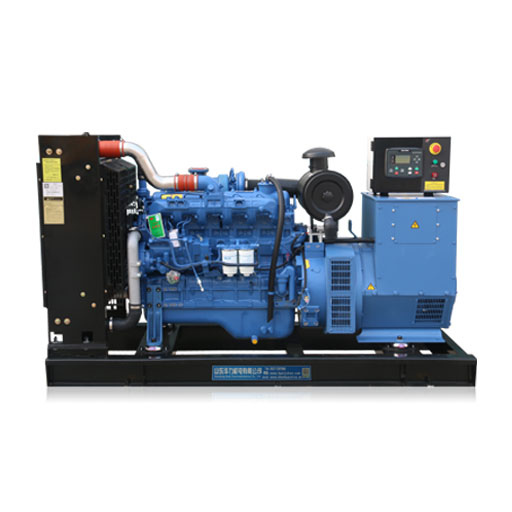
- Output Current: AC generators produce currents that periodically reverse directions, whereas DC generators supply a direct current flowing in only one direction.
- Design: AC generators use slip rings to transfer the current, whereas DC generators use a commutator for the current to flow only in one direction.
- Applications: AC generators are mostly used in power grids and household electricity supplies, whereas DC generators are employed in special cases such as battery charging or small power systems.
- Efficiency and Maintenance: AC generators would rather be more efficient with a higher maintenance rate compared to DC generators, which consist of a host of mechanics that are wearing away.
Technical Differences Explained
In order to further our distinction between AC and DC types of generators in any contemporary power scheme, evaluating their nature and application is essential. An AC generator or alternator produces a voltage of whatever polarity that reverses direction periodically. Modern AC generators generally operate at either 50 Hz or 60 Hz, depending upon the standards set in a particular region. AC generators gain their efficiency due to their ability to use transformers that allow upstream transmission of power at a higher voltage, thereby minimizing power loss. For instance, nowadays, the electrical power generated from power stations is transmitted by high-voltage AC Transmission Lines over hundreds of miles with an efficiency of about 90%.
On the other hand, a DC generator outputs a steady one-way current, finding application in special industrial processes requiring well-regulated voltage or for electric vehicle drives and energy storage. A DC generator also does not allow efficient transmission of power over long distances, owing to greater energy losses, but is better suited for precision applications. For example, in renewable energy systems such as solar photovoltaic installations, DC generators are frequently paired with inverters to convert energy for various uses.
With the trials of modern innovations, the durability and power outputs of both types of generators have been further improved. The use of novel materials like superconductors opens up new avenues in increasing energy output capacities, while maintenance-free design improvements continue to reduce long-term operational costs.
Efficiency and Performance Factors
The efficiency and performance of a generator, whether AC or DC, depend on the crucial factors of proper design, load conditions, and the environment of operation. There are instances where present AC generators show an efficiency of 98% owing to better core materials and designs that minimize iron losses; similarly, modern DC machines can approach 95% efficiency, depending on configurations and improvements that concern commutators and brushes according to their specific use.
The load type also plays an important role in determining performance; resistive loads tend to offer a higher level of efficiency to the generator with inductive or capacitive loads contributing to reactive power losses. Another innovative factor significantly lowering heat loss has been the setting up of excellent and sophisticated cooling systems like water cooling. A case in point is well-maintained generators under good load conditions, which increased efficiency in output by saving 10% of energy waste, thereby making it more economical and sustaining over time.
Lastly, the prevailing environmental condition is considered apart from temperature, humidity, and altitude for impacting generator operations. Generators operating at jutting altitudes are less efficient due to reduced air density that impairs cooling, but modern generators are being built so as to somewhat adjust to these conditions and work reliably in a range of environments. Emphasizing such enhanced implementations proves that generator technology, even now, is moving on the road toward achieving peak operational efficiency with minimum energy losses.
Use Cases for AC and DC Generators
AC generators have been mainly housed at power plants for power generation to provide power to homes, places of business, and industries. They give the utmost assurance of electricity distribution capability over longer distances because transformers, which work towards the stepping-up or stepping-down of voltage levels, stand compatible with them. For instance, AC generators ensure steady and stable power delivery over large distributed grid systems. Advanced technologies have witnessed AC generators with higher capacities producing a voltage of well over 25 kV to cater to the growing infrastructure of urban areas.
Instead, DC generators are better for applications where steady and controlled voltages are required, such as in electric vehicles, battery charging, and small renewable energy setups. These generators are very necessary in industries using direct energy storage, such as off-grid solar configurations, where the efficiency of battery charging is vital. Data suggests that these modern, high-efficiency DC generators, when integrated with energy storage systems, achieve an energy conversion efficiency of well over 90% and therefore, become vital implements for sustainable energy solutions. Consequently, they are also frequently employed for electronics, telecommunication systems, and certain types of industrial machinery where exact voltage regulation is required.
Conclusion: Choosing the Right Generator

Your specific power needs, the generator’s efficiency, and its utility should all be considered in generator selection. For sustainable energy systems, an efficient DC generator with proven energy conversion above 90% would be preferred. The generator should also be capable of delivering stable and reliable performance where these aspects are critical, such as telecommunication or industrial machinery. Always go for trusted manufacturers and verify the ratings of any generators against your requirements.
Factors to Consider for Selection
- Efficiency and Performance Metrics
The DC generators are highly efficient, and conversion efficiencies can be above 90%, thereby minimally losing power during operation. A good guide when choosing a generator is to opt for a brand that comes with some kind of certification or testing reports that explicate efficiency breakdowns under different load conditions. Gensets with well-thought-out brushless designs tend to perform with minimum variance in output and last longer.
- Power Output and Application Suitability
The power output must satisfy operational requirements. Industrial applications require between 5 kW and 50 kW, depending on the machines involved. Whereas smaller systems for renewable energy are commonly equipped with generators of 1 kW to 10 kW, also having support for voltage regulation to react to changing loads.
- Durability and Build Quality
Basically, copper windings ensure longer mechanical life in rough environments coupled with coatings that prevent corrosion. These are reliable or recommendable machines with thermal protection and bearings designed for long usage.
- Noise Levels and Maintenance Requirements
Noise considerations sustain some importance for generators in residential or commercial pantries. One may go with those units below 65dB of sound output. Maintenance considerations become worthy for generators with self-lubricating parts and sophisticated cooling mechanisms that reduce abrasion.
- Cost and Warranty Coverage
Pricing matters but you should look at the bigger picture in assessing value, such as efficiency, build quality, and warranty coverage. Good brands have at least a three-to-five-year warranty that guarantees support even after purchase.
- Environmental and Regulatory Compliance
Choose generators that comply with some of the environmental standards, for example, the RoHS Directive or the EPA Tier 4 regulations. Such directives offer minimized levels of pollution and ensure sustainable energy means, mainly relevant to industries looking to offset their carbon footprints.
By thoroughly evaluating these factors, you can make an informed decision that fulfills your operational, financial, and sustainability goals.
Future Trends in Generator Technology
The use of generators has been evolving rapidly, with innovations aimed at improving efficiency, sustainability, and adaptability to modern energy demands. One such trend includes the evolution of hybrid generators that blend in a traditional fuel source with inputs of renewable energy, such as solar or wind. Hybrid systems are trendy today as they preserve fuel efficiency and minimize greenhouse gas emissions in line with the accountability scheme of worldwide carbon neutrality.
The advancement in battery storage technology is also reshaping the generator industry. Generators are, therefore, being outfitted more frequently with large-capacity lithium-ion battery systems for energy storage and peak shaving to ensure the proper supply of power during fluctuating demands. This, in return, increases the reliability yet also lessens wear and tear on the generator, prolonging its operational life.
Another important development is the enhancement of the Internet of Things (IoT) services for generators. IoT generators provide access to metrics tracking, health monitoring, and remote diagnosis of generator performance in real time. Industry reports observe that extending IoT services could save up to 20% of downtime costs by circumventing unforeseen outages.
Hydrogen fuel cell generators offer yet another innovative invention. These zero-emission generators generate hydrogen as a clean energy source with water being the only by-product. Huge investments are being made in the research and development of these systems, projecting them as a realistic solution for industry’s search for sustainable energy alternatives.
Moving forward, the use of AI-based automation is expected to flourish within generator systems. AI algorithms are being developed with the aim of enhancing energy consumption optimization, anticipatory maintenance, and output adaptation based on real-time environmental and operational constraints. Studies have revealed that systems integrated with AI are able to increase efficiency by up to 15%, thus enabling significant operational cost reduction.
The current rise of microgrids also plays a role in shaping future trends in generator technology. As the focus shifts toward decentralized energy systems, generators are being rendered ready for integration into microgrids to provide backup power and increased resilience to local energy networks. This trend is especially relevant for areas prone to natural disasters or with limited grid access.
These major evolutions paved the way for the clean-energy paradigm shift for generator technology based on intelligent control and enhanced reliability.
Final Thoughts on AC and DC Generators
Each type of generator has its advantageous characteristics depending on the application. It is very efficient to use AC generators as transmission sources over large distances and by grid systems. On the contrary, DC generators are intended for special uses for stable and steady power, such as charging batteries or industrial purposes. However, I believe the choice depends on what the user really intends to achieve, and what his or her priorities are in that respect-in terms of efficiency, cost, and maintenance.
Reference Sources
-
Basic AC Electrical Generators – Brown University
This document explains the design and functionality of three-phase AC generators, including their coil arrangement and power generation process. -
How Power Grids Work – Smith College
A resource detailing how power plants produce three-phase AC power and its role in electrical grids. -
Electric Power Systems – Carnegie Mellon University
This course material discusses synchronous generators and their operation in producing AC power for grids. -
Generator Exciter and Voltage Regulator – NRC.gov
A technical document explaining the principles of three-phase AC power generation and its components.
Frequently Asked Questions (FAQs)
What is a three-phase generator, and how does it work?
A three-phase generator is a type of electrical generator that produces three alternating currents (AC,) which are 120 degrees out of phase with each other. This configuration allows for a more efficient and stable power supply, making it ideal for industrial applications where large amounts of electrical power are needed. The generator converts mechanical energy into electrical energy through electromagnetic induction, utilizing the rotor of the generator within a magnetic field.
Is a three-phase generator AC or DC?
A three-phase generator is an AC generator, meaning it produces alternating current. The output of a three-phase generator consists of three separate AC voltages that are phase-shifted, allowing for a continuous and smooth power flow in electrical systems.
What is the difference between a single-phase and a three-phase generator?
The main difference between a single-phase and a three-phase generator lies in the output. A single-phase generator produces one alternating current, while a three-phase generator produces three separate currents that are 120 degrees out of phase with each other. This results in a more balanced and efficient power distribution, particularly beneficial for heavy loads and induction motors.
Can a three-phase generator be connected to a DC system?
While a three-phase generator primarily produces AC output, it can be connected to a DC system through the use of rectifiers or inverters. This conversion process allows the AC power to be transformed into pulsating DC or a stable DC voltage, enabling compatibility with DC motors and other applications requiring direct current.
How does a three-phase generator generate electricity?
A three-phase generator generates electricity by rotating a coil within a magnetic field, which induces an electromotive force (EMF) according to Faraday’s law of electromagnetic induction. As the rotor spins, it creates a three-phase AC output that can be harnessed for various electrical applications.
What are the benefits of using a three-phase system?
Using a three-phase system offers several benefits, including increased efficiency, reduced power losses, and the ability to deliver a higher amount of electrical power. It also allows for smaller and lighter conductors and transformers compared to single-phase systems, making it a preferred choice for industrial and commercial applications.
What is the phase voltage in a three-phase generator?
Phase voltage in a three-phase generator refers to the voltage measured across a single phase of the generator. In a balanced three-phase system, each phase voltage is equal in magnitude and phase, and the total line voltage is higher than the phase voltage by a factor of the square root of three (√3).
What types of motors can be powered by a three-phase generator?
A three-phase generator can power various types of motors, including three-phase AC motors and induction motors. These motors are designed to operate efficiently on three-phase power, providing smooth and consistent torque for industrial applications.
What is the frequency of the generator’s output?
The frequency of a three-phase generator’s output is determined by the speed of the rotor and the number of poles in the generator. Common frequencies include 50 Hz and 60 Hz, depending on the region. This frequency plays a crucial role in the generation and distribution of electrical power, impacting the performance of connected electrical devices.
